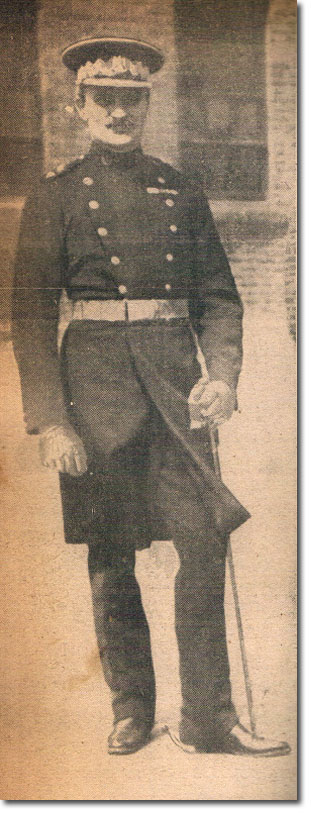|
|


|
|
Charles Bulkeley Bulkeley-Johnson was born on 19 Nov 1867, the son of Francis Bulkeley-Johnson. He was educated at Harrow School and attended RMC Sandhurst. He was commissioned into the Scots Greys on 5 February 1887 and was promoted to lieutenant on 16 Mar 1889. Bulkeley-Johnson was a talented sportsman, horseman and big-game hunter. From January 1899 until January 1903 he was attached to the Egyptian Army, taking part in the Nile Expedition and in the operations that led to the defeat of the Khalifa. He was appointed CO of the regiment on 19 August 1911 at the comparatively early age of 43 and took them to war in August 1914 as part of Sir Philip Chetwode's 5th Cavalry Brigade. He was promoted GOC 8th Cavalry Brigade, 3rd Cavalry Division, on 23 November 1914.
For part of 1915 Bulkeley-Johnson's Brigade Major was Keppel Bethell. Later in the war, Walter Guinness, one of Bethell's staff officers, visited 8th Cavalry Brigade, commenting that 'Bulkley Johnson [sic] seems rather like Bethell in character and I should imagine they must have knocked their heads together'. Bulkeley-Johnson commanded 8th Cavalry Brigade until his death in action on 11 April 1917 while carrying out a personal reconnaissance of the enemy near Monchy-le-Preux. He was 49. He is buried in Grouy-en-Artois Communal Cemetery Extension, France. He was the thirtieth British general to be killed in action or to die of wounds on the Western Front. The photo of him, in regimental undress uniform, is taken from a newspaper cutting of 1917 which has this caption: Brigadier-General Bulkeley-Johnson CB, ADC to the King, who was killed during a brilliant cavalry charge which preceded the capture of Monchy. He was formerly colonel of the Scots Greys and had won a wide reputation as a cavalry leader. Bulkeley-Johnson's death is described by Second Lieutenant D W J Cuddeford whose duty it was to escort the Brigadier-General round the newly established positions north of Monchy: 'The Brigadier thought he would like to see something of the enemy dispositions for himself, and I told him that it could be one, but that to reach the point of vantage on the low ridge in front, the snow having cleared just then, the greatest caution was required, and that if the German snipers spotted us it would be necessary to dodge them by sprinting diagonally from shell-hole to shell-hole as we did. Nevertheless the General insisted on going against my advice, and perhaps being rather old for that sort of active dodging or, as it seemed at the time, too dignified to get well down at the sound of bullet, he would persist in walking straight on. That of course was deadly, as I well knew. I led the little procession and sure enough as soon as we reached the ridge a fusillade of bullets hummed around our ears. We had not gone far when one skimmed past me and truck the General full on the cheekbone. I shall never forget his piercing shriek as he tumbled down and rolled over on the ground.' |
Regimental Details | Commanding Officers
Armed Forces | Art and Culture | Articles | Biographies | Colonies | Discussion | Glossary | Home | Library | Links | Map Room | Sources and Media | Science and Technology | Search | Student Zone | Timelines | TV & Film | Wargames